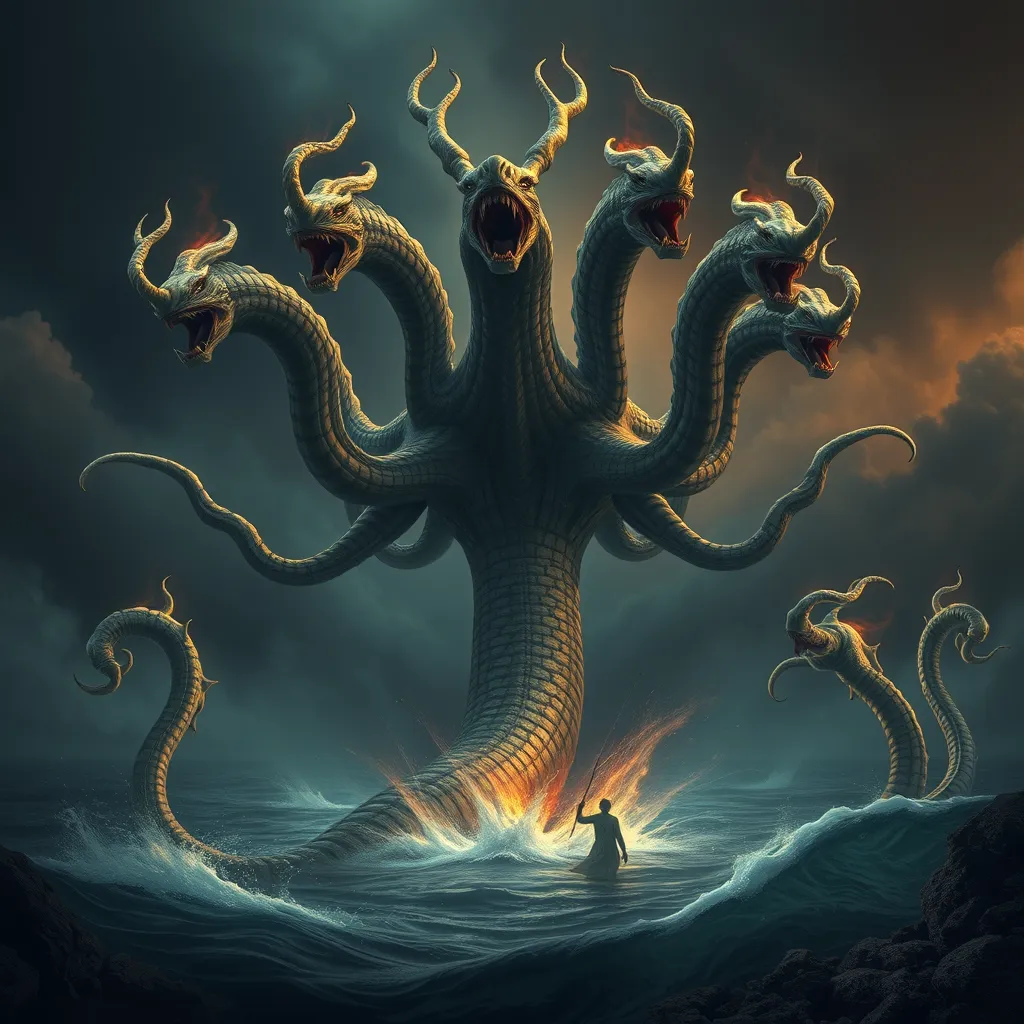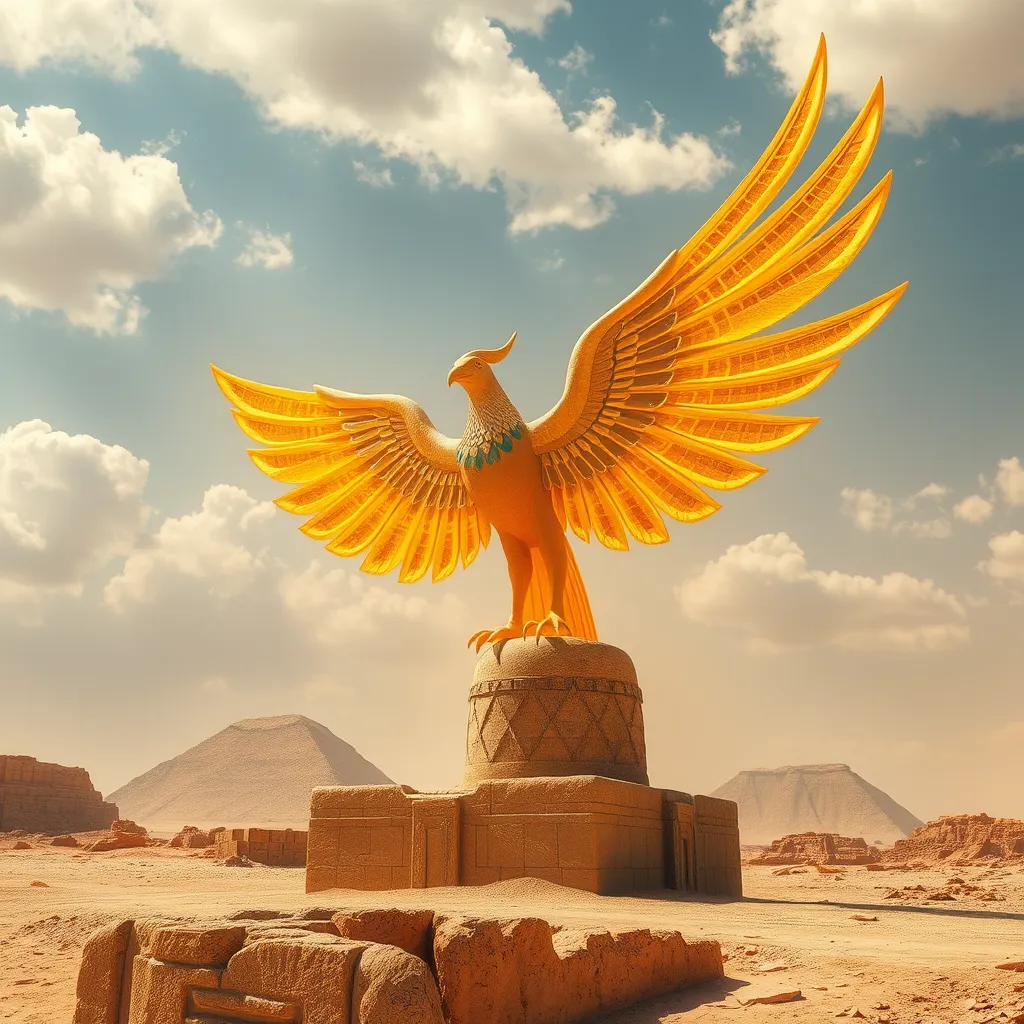The Seven-Headed Terror: The Hydra of Greek Mythology and its Significance
I. Introduction
The Hydra is one of the most famous creatures in Greek mythology, often depicted as a multi-headed serpent-like monster. This legendary beast has captured the imagination of countless generations, symbolizing the struggle against insurmountable odds. In ancient cultures, mythological creatures like the Hydra served not only as entertainment but also as reflections of societal fears and values.
This article aims to delve into the origins, characteristics, and cultural significance of the Hydra, exploring its role in mythology and its enduring legacy in modern times.
II. Origins of the Hydra
A. Historical context and literary sources
The Hydra first appears in ancient texts, notably in Hesiod’s “Theogony,” where it is described as a monstrous offspring of Typhon and Echidna. It was said to inhabit the swamps of Lerna in the Argolid region of Greece, terrorizing local populations.
B. Description of the Hydra’s lineage and parentage
The Hydra was a child of the primordial beings Typhon, a giant serpentine monster, and Echidna, often referred to as the “mother of monsters.” This lineage sets the Hydra within a larger context of chaos and destruction in Greek mythology, reinforcing its role as a formidable adversary.
C. The Hydra’s role in myths and legends
The Hydra’s presence in myths often signifies a challenge that heroes must overcome. Its formidable nature and regenerative abilities make it a classic representation of evil that must be confronted and vanquished.
III. Physical Characteristics of the Hydra
A. Description of its seven heads and regenerative abilities
The Hydra is most famously depicted as having seven heads, though some accounts suggest it could have more. A unique feature of the Hydra is its ability to regenerate its heads; for every head cut off, two would grow back in its place. This made the creature a particularly daunting foe.
B. Symbolism of the Hydra’s body and heads
The multi-headed nature of the Hydra symbolizes the idea of challenges that multiply when confronted. Each head represents a different obstacle, with the monster’s regeneration highlighting the difficulty of overcoming such challenges permanently.
C. Variations of the Hydra in different myths
Throughout various myths, the Hydra’s appearance and abilities can differ. Some accounts emphasize its poisonous breath and blood, while others detail its connections to the underworld, reinforcing its status as a creature of chaos.
IV. The Hydra in the Labors of Heracles
A. Overview of Heracles and his Twelve Labors
Heracles, one of the most celebrated heroes in Greek mythology, was tasked with completing Twelve Labors as penance for a crime. The second of these labors was the slaying of the Hydra, a feat that would test his strength and wits.
B. Detailed account of the battle against the Hydra
The battle against the Hydra took place in its lair at Lerna. Armed with his club and the help of his nephew Iolaus, Heracles confronted the beast. As he cut off each head, Iolaus cauterized the wounds with a burning brand to prevent regeneration. This teamwork ultimately led to the Hydra’s defeat.
C. Analysis of Heracles’ strategy and its significance
Heracles’ strategy of using fire to prevent the Hydra’s regeneration illustrates the importance of cleverness in overcoming adversity. This labor not only showcased physical strength but also the necessity of intelligence and collaboration in facing life’s challenges.
V. Symbolism and Themes Associated with the Hydra
A. The Hydra as a symbol of challenges and obstacles
The Hydra represents the multifaceted nature of challenges that individuals face. Like the creature, problems can often seem to multiply when addressed, symbolizing the complexity of overcoming personal and societal issues.
B. Regeneration and the concept of resilience
The Hydra’s regenerative abilities serve as a metaphor for resilience. Just as the creature grows new heads, individuals can find ways to rise again after setbacks, reflecting human tenacity in the face of adversity.
C. The Hydra in the context of evil and chaos
In many stories, the Hydra embodies chaos and evil forces that threaten order. Its defeat by Heracles represents the triumph of good over evil—a common theme in mythology that resonates with audiences across generations.
VI. The Hydra in Modern Culture
A. References to the Hydra in literature and art
The Hydra continues to inspire modern literature and art. It appears in various works, from classical literature to contemporary novels and films, often representing the struggles of the protagonists.
B. Symbolism in contemporary media and popular culture
In modern media, the Hydra is frequently used as a metaphor for complex problems. For instance, in movies and video games, characters often face “Hydra-like” challenges that multiply as they try to solve them.
C. The Hydra as a metaphor in modern discussions
The metaphor of the Hydra is often employed in discussions about social and political issues, illustrating how problems can be interrelated and multiply in complexity. This usage highlights the ongoing relevance of the Hydra in contemporary discourse.
VII. Comparison with Other Mythological Beasts
A. Similarities between the Hydra and other multi-headed creatures
Other cultures also feature multi-headed creatures, such as the Indian demon Ravana or the Slavic Zmey Gorynych. These beings often share similar traits of chaos and challenge, highlighting a universal theme in mythology.
B. The role of monsters in mythology across cultures
Monsters serve as embodiments of humanity’s fears and struggles. Across various cultures, they challenge heroes, forcing them to confront their weaknesses and ultimately grow stronger.
C. Lessons learned from the Hydra and its counterparts
The lessons derived from the Hydra and similar mythological beasts often revolve around resilience, teamwork, and the importance of facing challenges head-on. These stories encourage individuals to confront their fears and obstacles with courage and ingenuity.
VIII. Conclusion
A. Summary of the Hydra’s significance in mythology and culture
The Hydra stands as a powerful symbol in Greek mythology, representing the complex nature of challenges and the human spirit’s resilience. Its multifaceted nature and regenerative abilities make it a compelling figure in stories of heroism and struggle.
B. Reflection on the enduring legacy of the Hydra
Even today, the Hydra’s legacy endures in literature, art, and popular culture. Its themes resonate with contemporary audiences, reminding us of the timeless nature of our struggles.
C. Final thoughts on the lessons the Hydra teaches us today
Ultimately, the story of the Hydra serves as a reminder of the importance of perseverance, collaboration, and the courage to face challenges. As we navigate our own lives, the lessons learned from this mythological beast continue to inspire and guide us.




